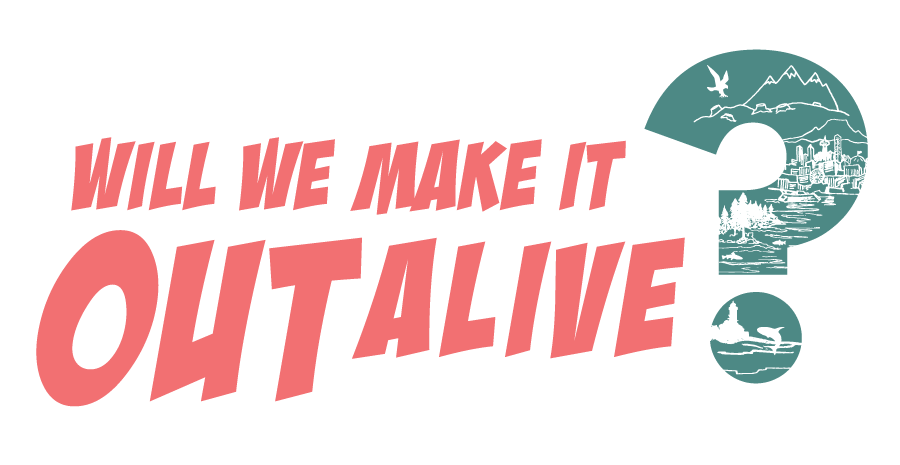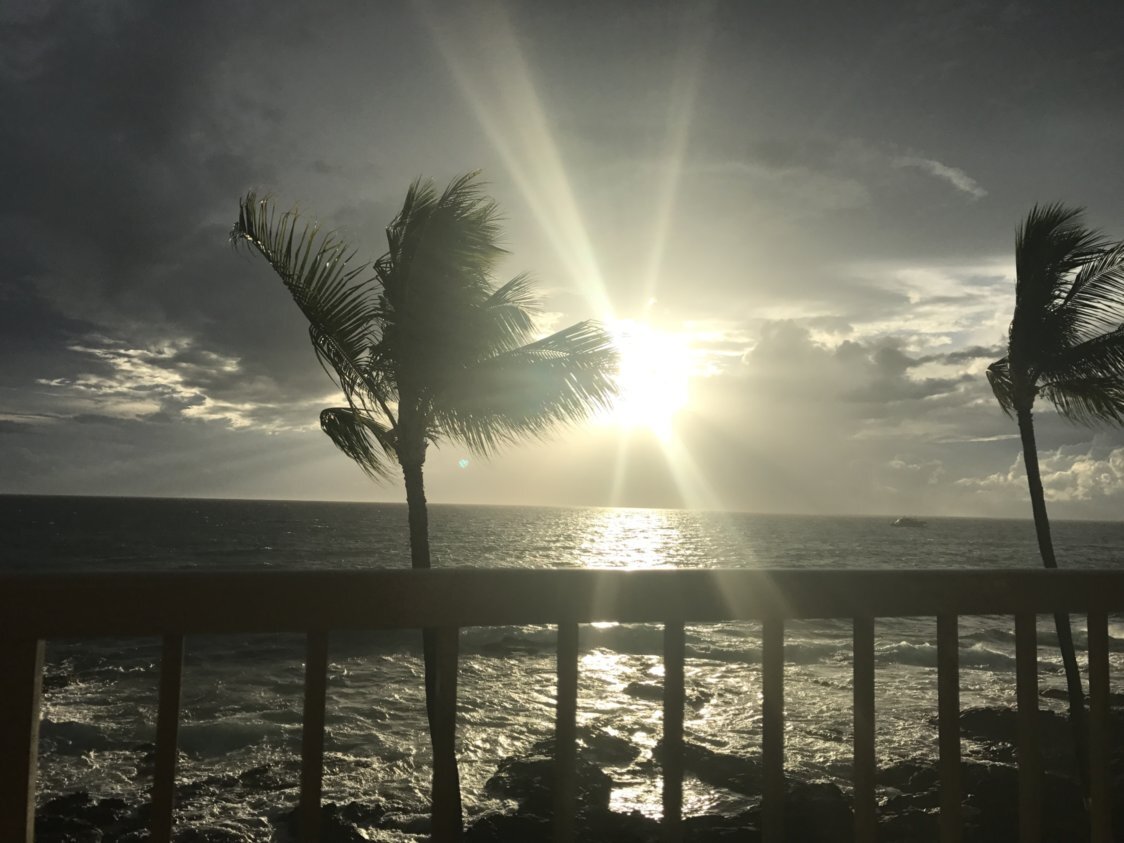Episode 17: The Partnership and the Sound
/The Partnership and the Sound: A Love Story of Recovery.
View from the lanai in “Backdoor Style”
In this episode we will FINALLY share the story that birthed the term backdoor style, we dive into the Puget Sound Partnership and the 2019 State of the Sound Report (we will not be recovering Puget Sound by 2020, since it’s already here), how GIS dashboards make life easier and the Call to Action from the State of the Sound report...even though it’s not gonna be recovered by 2020, that’s no reason to just give up and the Partnership has lots of suggestions for actions. So, get settled in, cause we are going full NERD on this episode. And it’s our longest yet.
State of the Sound
The 2019 State of the Sound is the Puget Sound Partnership’s sixth biennial report to the Legislature on progress toward the recovery of Puget Sound by 2020. The document reports on both the status of the Partnership's recovery efforts and the status of a suite of ecosystem indicators. The report is intended to help partners and decision makers better understand how well the recovery effort is going, ecosystem health and progress toward Puget Sound recovery goals, and the role each partner can play in achieving Puget Sound recovery. It also responds specifically to state statute (RCW 90.71.370(3)).
There are two parts to the State of the Sound; the website or the PDF report. (You can also download a shorter brochure.) The PDF report includes additional information on the status of the Puget Sound recovery effort, including detailed information on funding, near-term actions, on-going programs, legislative and policy developments and a summary of citizen concerns. The website includes other stuff that isn’t in the PDF.
The State of the Sound opens with the overall status and progress of conditions in Puget Sound as “Mixed.” But first…
Who is the Puget Sound Partnership, what do they do and why?
“The Puget Sound Partnership is the state agency leading the region’s collective effort to restore and protect Puget Sound. The Puget Sound Partnership brings together hundreds of partners to mobilize partner action around a common agenda, advance Sound investments, and advance priority actions by supporting partners”
In 2007, the then Governor of WA, Christine Gregoire, birthed a little Puget Sound Partnership baby, which she gave the tiny task of recovery of Puget Sound by 2020, and I mean, that is 13 years… anyways, they were legislated to work towards 6 goals. They build a shared vision for recovery through the Action Agenda, which identifies the top priority actions or programs to stay on course for recovery. Really what it all boils down to, is they are trying to better understand all of the great work that is going on out there, what challenges groups are facing in relationship to recovery of Puget Sound and prioritize and ensure effective funding.
WHACK FACT! The Action Agenda is a recovery plan based on science and developed by a regional partnership. The plan describes local and regional strategies and highlights specific actions needed to protect and restore Puget Sound. These strategies and actions provide opportunities for federal, state, local, tribal, and private entities to better invest resources and coordinate actions.
The bulk of the Partnership is funded through the Puget Sound National Estuary Program. For the 2015-2017 biennium, the Partnership had a budget of 18.8 million, including 9.9 million from the US EPA, 7.5 million from Washington and 1.4 million from NOAA. However, the cost to implement all of the near term actions of the 2018-2022 Action Agenda is estimated at over a billion dollars!!! Sufficient funding remains one of the biggest barriers to the recovery of Puget Sound. The 2018-2022 Action Agenda includes 631 near term actions that are ready to get underway, if there is funding available.
The Puget Sound Partnership has six legislated goals:
Healthy human population
Vibrant quality of life
Thriving species and food web
Protected and restored habitat
Abundant water quantity
Healthy water quality
So no big deal, just a few small tasks that the Puget Sound Partnership was legislated to do!
This is a ginger tabby. She did have freckles. Also, cats love unicorn horns; fact!
Now, what’s up with the State of the Sound?
The State of the Sound shows the progress (or lack thereof) towards the recovery of Puget Sound, using 2020 target goals for recovery and indicators of the Puget Sound Vital Signs. The Puget Sound Vital Signs are basically a measure of ecosystem health, which then guide future efforts for Puget Sound recovery. The Partnership has worked with numerous partners and stakeholders to develop the indicators and target goals and they continually assess and try to find the best ways to support partners in the recovery of Puget Sound.
The indicators are broken out into the six legislated goal categories defined above, with 25 sub-categories (or Vital Signs) and 52 indicators. Vital Signs include things like Freshwater Quality, while the indicators include number of freshwater impairments. Thirty-one of the 52 indicators have target goals set for recovery by 2020, most of which, unfortunately, have not been met.
Progress of the indicators is based on an evaluation over time compared to a baseline reference. The State of the Sound breaks out the progress into five categories.
While we do go into (great) detail on some of the indicators in the episode, we recommend you check out the Vital Signs website.
GIS TOOLS
In this episode we talked about a couple different dashboard tools, check out the GIS Tools blog to learn more! Take home message: Informational dashboards are better with maps! To see a related Tableau dashboard (without maps…), see the 2016 Puget Sound Report Card.
State of the Sound Call to Action
“The primary barriers between us and more food for orcas, clean and sufficient water for people and fish, sustainable working lands, and harvestable shellfish are funding and political fortitude. The single greatest step we could take to ensure a durable, systematic, and science-based effort to recover Puget Sound is to fully fund the implementation of habitat protection and restoration, water quality protection, and salmon recovery programs.”
One of the main take home messages of the current State of the Sound is that although much of the data is bleak and we are far from recovery, there is still time to recover Puget Sound. And each of us has a role to play in that recovery. The State of the Sound Report resounds this call for action: “Let us be bold in our intent and actions to build a healthy, resilient, and economically prosperous Puget Sound for all!
They have broken out specific actions for various groups and partners that are critical to Puget Sound Recovery. These groups include recommendations for action from the State Legislature, State Agencies, Local Government, Congress, Federal Agencies, The Puget Sound Partnership, non-governmental organizations and the Public. They also have tribal recommendations but acknowledge that their tribal partners are sovereign nations and invite them to continue to work together in specific ways. If you want to see all of their recommendations, visit the Call to Action website.
Here’s what you and I can do (credit goes mostly to the Puget Sound Partnership, with a few modifications by us):
Get involved.
Volunteer on a habitat restoration project or in a citizen science program. See orca.wa.gov for links to organizations to join, or check out the Citizen Science sections of our past episodes.
Quiet the waters of Puget Sound to help orcas find food.
If you’re a boater, give orcas space. Follow the BeWhaleWise guidelines for whale watching. And please use pump-out stations to keep sewage out of Puget Sound.
Drive less.
Support efforts to improve alternative transportation options in the Puget Sound region, and try some yourself! A few ideas are to bike, carpool, combine trips, telecommute, or take the bus or the train.
Keep plastics and toxic chemicals out of our waterways.
Recycle (or better yet, reduce your consumption). Use environmentally friendly products in your home and on your landscape, fix vehicle leaks, use a commercial car wash, and have your vehicle oil changed by a professional.
Speak up for Puget Sound.
Vote. Tell a friend. Make sure your local, state, and federal representatives know how important Puget Sound is to you.
Listen to our previous episodes, educate yourself, and take action!
Tell a friend about the podcast as well. In previous episodes we’ve discussed many topics raised in the report.
Shoreline armoring - Episode 13
Marine debris removal (which relates to toxins in the water and their impacts on fish and other species) - Episode 12
Drought (or the opposite of abundant water) - Episode 11
Fire (which has an impact on air quality) - Episode 9
Nonnative species - Episode 3
Thanks for joining us!
Please don’t forget to rate, review and subscribe on Apple Podcasts, Stitcher, or wherever you get your podcasts (like Tune In, Castbox Himalaya, iheartradio, etc). Please let us know what you think at outalivepodcast.com or facebook.com/WillWeMakeItOutAlive. Also, if you are more visually inclined, check out our YouTube page!
**Correction!
We received feedback from the Puget Sound Partnership on the chemicals in Salmon indicator, which we had questioned whether it was appropriate to use insufficient or no data for the progress.
Here's what Nathalie Hamel from the Partnership said, “Allow me to clarify one of our Toxics in Fish Vital Sign indicators: contaminants in adult salmon. The reason why the “Progress” conclusion is “Insufficient or no data” is because there aren’t results yet that allow us to show whether contaminants have declined or increased in the fish. On the podcast, you questioned that conclusion, and that it should be “mixed”. Well, it can’t be as progress asks the question around change over time, and we don’t have the data yet to say that. There’s no mistake there (not that we are perfect or anything).”
To clarify where we were coming from, it appears that there were fish tissue monitoring results from the 1990s and 2003-2004, discussed in the vital sign. We assumed that those earlier results were being used as the baseline conditions and that therefore monitoring in 2016 and 2017, would show progress from the earlier monitoring events. Now we believe the PSP clarified that the 2016 and 2017 monitoring are the baseline, and no additional monitoring for PCBs and PBDEs has taken place since then, so there is no new data to show whether the these contaminants have increased or decreased from the 2016-2017 monitoring.
Thanks to Nathalie for sending in that correction! We do make mistakes and we want to share corrected information when we become aware of those mistakes...because that’s how science do.







